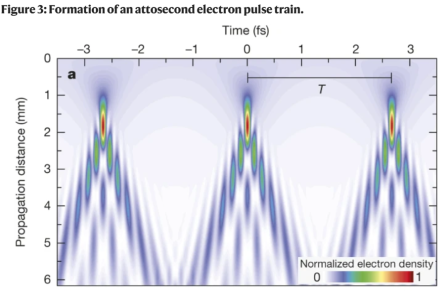
Why this function always results in a wave with value 0?
make/d/o/n=20 twave=-10^(6)+2*10^(6)/19*p make/d/o/n=40 zwave=10^(9)*p make/d/o/n=(20,40)/c yw function/c f1(inp) variable inp nvar ini,a,b,c,m,hbar nvar t,z variable inp0=sqrt(2*m*0.1),v0=sqrt(2*0.1/m) variable/c temp1=cmplx(0,-(inp)^2/2/m*t/hbar) variable/c temp2=cmplx(0,(inp)*z/hbar) variable phi0=pi/10 variable/c temp3=cmplx(0,ini*phi0) variable temp4=abs(2*a) return besselj(ini,temp4)*exp(-(inp-inp0-2.40747*10^(-6)/v0*ini)^2/4/b^2)/sqrt(sqrt(2*pi)/b)*exp(temp1)*exp(temp2)*exp(temp3) end function/c f10(tt,zz) variable tt,zz nvar ini,a,b,c,m,hbar variable/g t,z t=tt z=zz variable/c cir=integrate1d(f1,-100,100,0) return cir end function ffinal(twave,zwave,yw) wave twave,zwave wave/c yw variable/g ini,a=2,c=1,m=0.511,hbar=1 variable/g b=m*10^(-6)/sqrt(2*m*0.1) variable i,j,ii yw=0 for(i=0;i<20;i++) for(j=0;j<40;j++) for(ii=-5;ii<6;ii++) ini=ii yw[i][j]+=f10(twave[i],zwave[j]) endfor endfor endfor end
I want to simulate PINEM electron density probability as a function of time and position after interaction with near field. But the function ffinal(twave,zwave,yw) always results in a zero yw wave. Basically it is the time-dependent momentum space electron wavefunction Fourier transformed to position space.What I want to get is shown in the attachment. It should be magsqr(yw). But yw in my code always equals zero. What's wrong with my code? Many thanks!








I'm betting you copied source from another program (perhaps MatLab)?
In any event, it is helpful to both use the debugger and to rewrite complicated expressions in pieces so you can see what the numeric results of each piece is.
In my rewritten f1 code, argReal = -984739315945430, and exp( -984739315945430) is identically 0. It isn't going to matter what you multiply it with, the result will be 0.
I think you have one or more typos in f1()
November 9, 2023 at 09:53 pm - Permalink
In reply to I'm betting you copied… by JimProuty
Thank you! I've learned much from you. I wrote the code directly in Igor. Although the physics problem is still unsolved, that is beyond the scope of this forum.
November 9, 2023 at 11:52 pm - Permalink
Hello Yuan,
It might help if you posted an image of the original equation that you are trying to evaluate together with the values of the relevant parameters. As Jim indicated above, the numerical factors that you are evaluating do not lead to a useful result. This is similar conceptually to implementing the sinc(x) function by directly computing sin(x)/x at x=0.
A.G.
November 10, 2023 at 12:20 pm - Permalink
In reply to Hello Yuan, It might help… by Igor
Thank you. I gave up the original formula and changed the physics behind the code and finally got the correct result after asking others.
November 14, 2023 at 05:14 am - Permalink
This is what I finally get using Igor. Electron bunching during free space propagation after interaction with optical near field.
November 14, 2023 at 05:18 am - Permalink